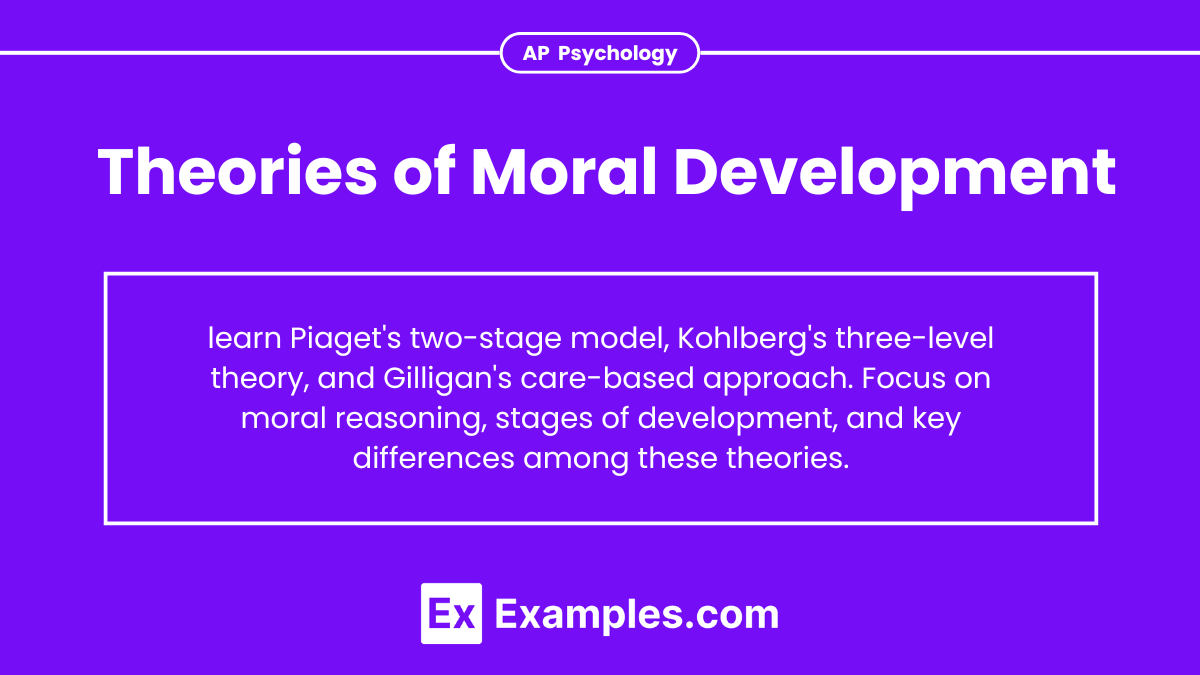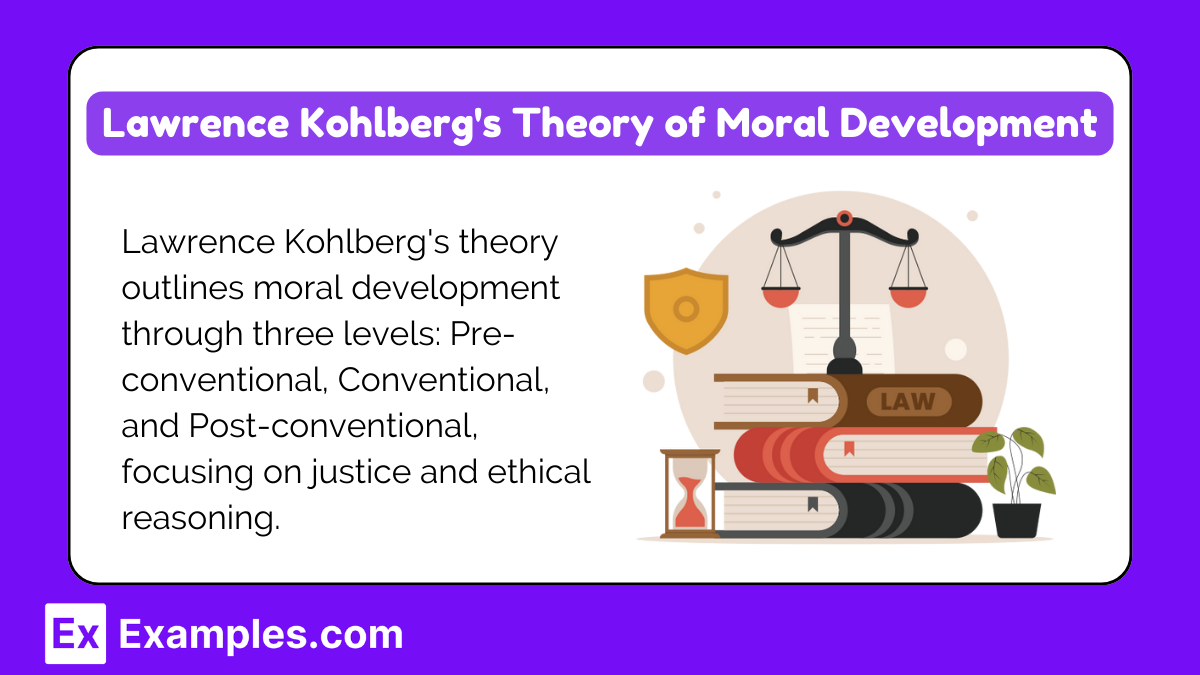Understanding the theories of moral development is crucial for the AP Psychology exam. These theories, developed by prominent psychologists like Jean Piaget, Lawrence Kohlberg, and Carol Gilligan, explain how individuals evolve their sense of right and wrong from childhood to adulthood. By examining cognitive processes and ethical reasoning, these theories provide insights into the stages of moral growth and the factors influencing moral decision-Criteria. This knowledge is essential for analyzing human behavior and psychological development.
Learning Objectives
Understand the key stages and principles of Jean Piaget's, Lawrence Kohlberg's, and Carol Gilligan's theories of moral development. Compare and contrast their approaches to moral reasoning, focusing on how they describe changes in moral thinking from childhood to adulthood. Apply these theories to real-life examples and scenarios. Evaluate the strengths and limitations of each theory, particularly considering cultural and gender perspectives. Develop a comprehensive understanding of moral development's role in psychological growth and social behavior.
Jean Piaget's Theory of Moral Development
Jean Piaget's theory of moral development outlines two stages: Heteronomous Morality, where children see rules as fixed and focus on consequences, and Autonomous Morality, where they understand rules are changeable and consider intentions. This theory highlights the cognitive basis of moral reasoning.
1. Heteronomous Morality (Moral Realism)
Age Range: Typically occurs from ages 5 to 10.
Characteristics:
Children view rules as fixed and unchangeable.
Rules are handed down by authority figures (e.g., parents, teachers).
Moral judgment is based on consequences rather than intentions.
Justice is seen as immanent; punishment will follow any wrongdoing.
2. Autonomous Morality (Moral Relativism)
Age Range: Begins around age 10 and continues into adulthood.
Characteristics:
Children realize that rules are created by people and can be changed through consensus.
They understand that intentions and context are important when judging actions.
Moral reasoning becomes more flexibility and autonomous.
Emphasis on fairness and equality.
Lawrence Kohlberg's Theory of Moral Development
Lawrence Kohlberg expanded on Piaget’s work, proposing a more detailed stage theory of moral development. His theory is divided into three levels, each containing two stages:
Level 1: Pre-conventional Morality
Stage 1: Obedience and Punishment Orientation
Age Range: Typically found in young children.
Characteristics:
Moral decisions are based on avoiding punishment.
Actions are judged by their direct consequences.
Stage 2: Individualism and Exchange
Age Range: Common in older children.
Characteristics:
Recognizes that different individuals have different perspectives.
Actions are judged based on how they serve individual needs or interests.
Level 2: Conventional Morality
Stage 3: Good Interpersonal Relationships
Age Range: Common in adolescents and adults.
Characteristics:
Emphasis on being good and maintaining relationships.
Actions are judged by intentions and conformity to social expectations.
Stage 4: Maintaining Social Order
Age Range: Usually emerges in adulthood.
Characteristics:
Focus on maintaining law and order.
Importance of doing one's duty and respecting authority.
Level 3: Post-conventional Morality
Stage 5: Social Contract and Individual Rights
Age Range: Typically seen in adults.
Characteristics:
Recognition of the arbitrary nature of laws and rules.
Emphasis on individual rights and social contracts.
Laws are important but can be changed for the greater good.
Stage 6: Universal Principles
Age Range: Rarely achieved.
Characteristics:
Moral reasoning is based on abstract principles and ethical beliefs.
Actions are judged by principles of justice, equality, and human rights.
Carol Gilligan's Theory of Moral Development
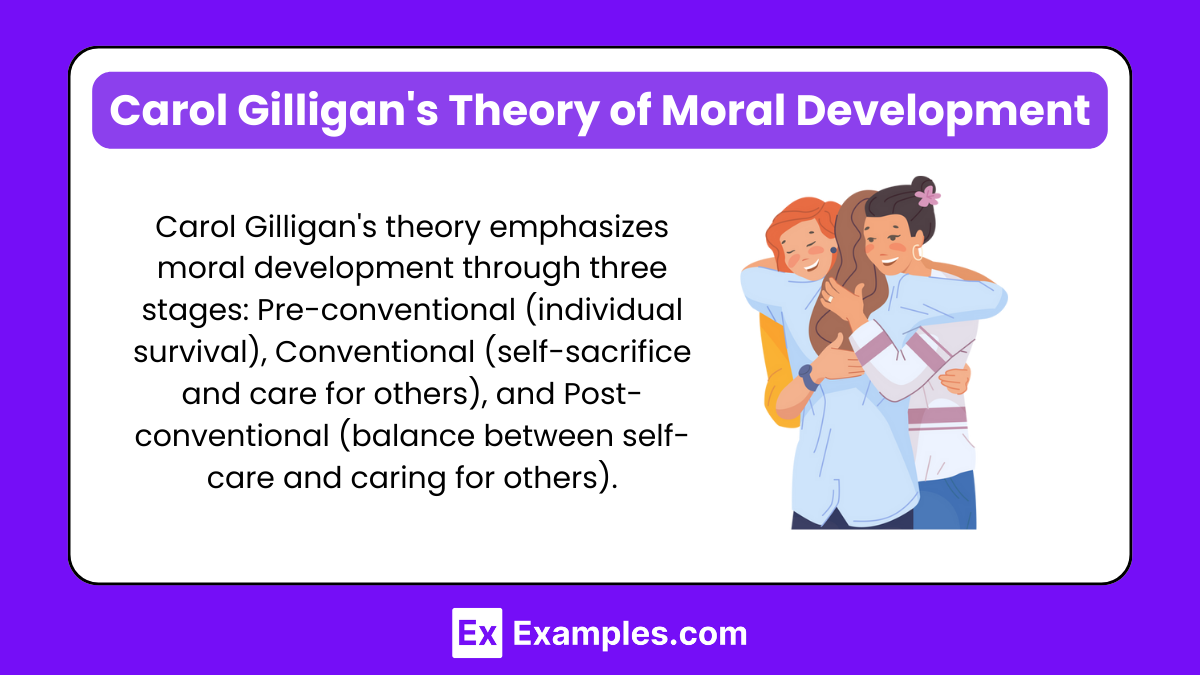
Carol Gilligan, a feminist psychologist, critiqued Kohlberg’s theory, arguing that it was biased towards male perspectives. She proposed an alternative theory emphasizing care and relationships, particularly relevant to females.
Stages of Gilligan’s Moral Development
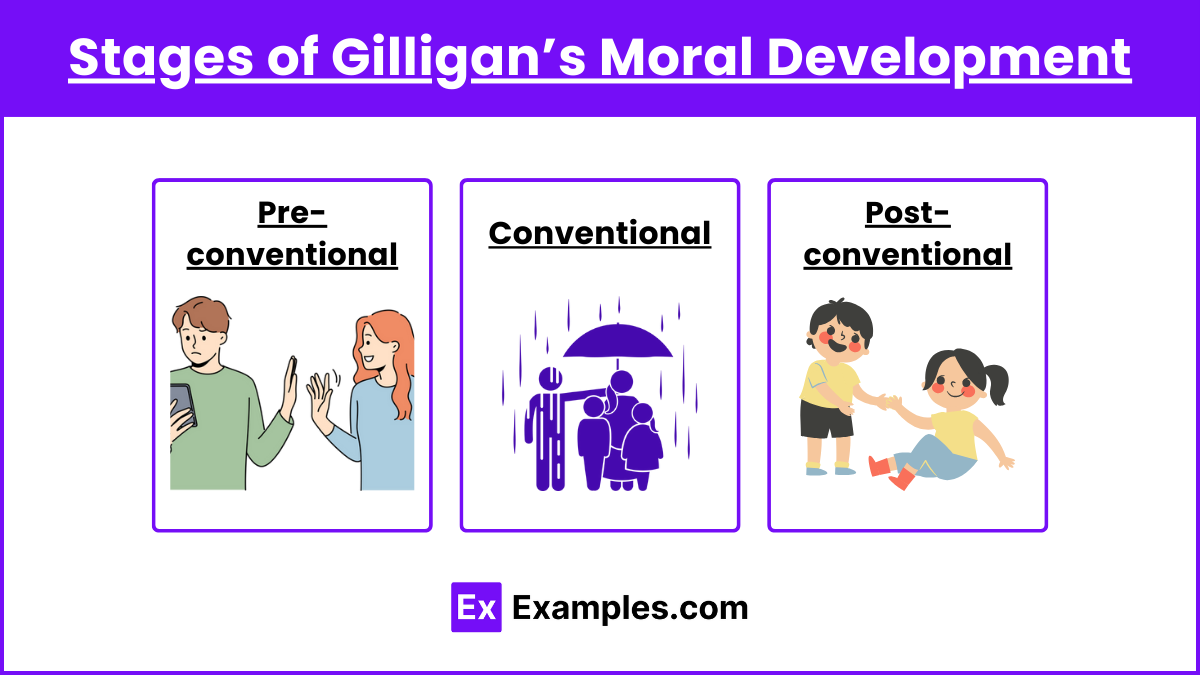
Stage 1: Pre-conventional (Orientation to Individual Survival)
Focus on individual survival and self-interest.
Transition from selfishness to responsibility.
Stage 2: Conventional (Goodness as Self-Sacrifice)
Focus on self-sacrifice and caring for others.
Transition from self-sacrifice to recognizing the importance of one’s own needs.
Stage 3: Post-conventional (Principle of Nonviolence)
Focus on balance between caring for others and caring for oneself.
Emphasis on nonviolence and mutual care.
Comparison of Theories
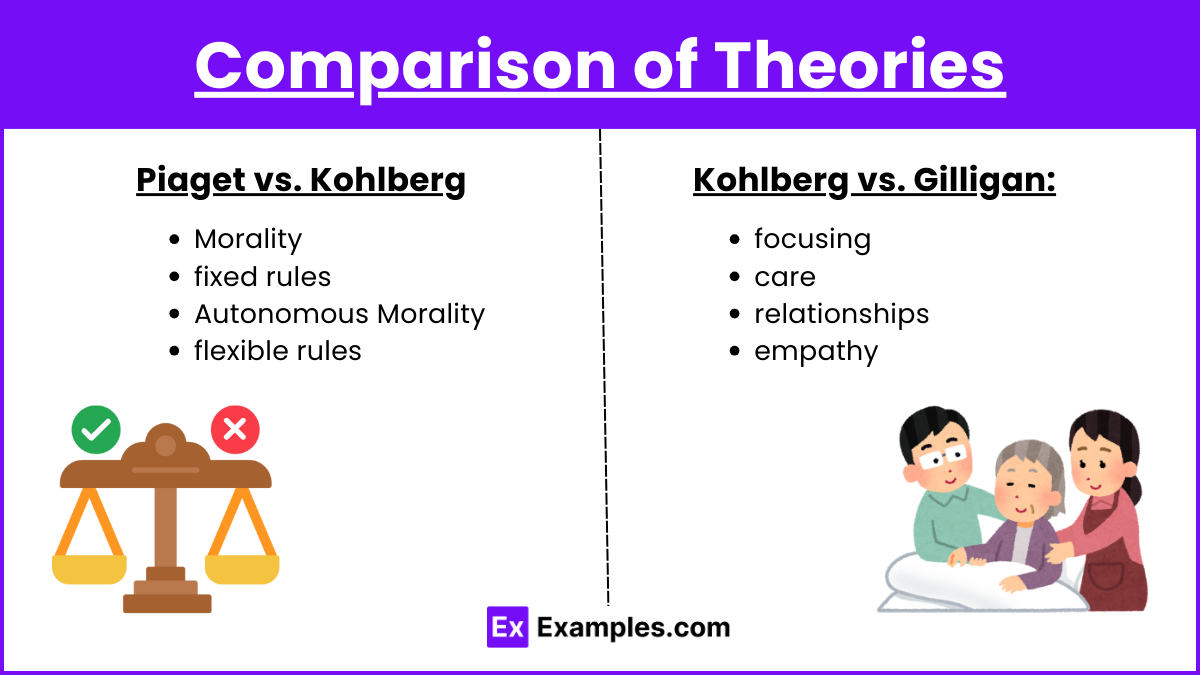
Piaget vs. Kohlberg:
Piaget’s theory focuses more on cognitive aspects and is less detailed than Kohlberg’s.
Kohlberg expands Piaget’s stages into a more complex and structured sequence of moral reasoning.
Kohlberg vs. Gilligan:
Kohlberg’s theory is based on justice and rights, often reflecting a more male-oriented perspective.
Gilligan’s theory emphasizes care and relationships, providing a complementary view that incorporates female moral reasoning.
Implications for Understanding Moral Development
Educational Settings:
Understanding these theories helps educators create age-appropriate moral education goals and programs.
Encourages the development of empathy, fairness, and ethical reasoning in students.
Parenting:
Provides insights into how children perceive rules and authority.
Helps parents guide their children through different stages of moral understanding.
Psychological Practice:
Assists psychologists in understanding moral dilemmas and conflicts in clients.
Aids in the development of therapeutic approaches that consider moral reasoning stages.

